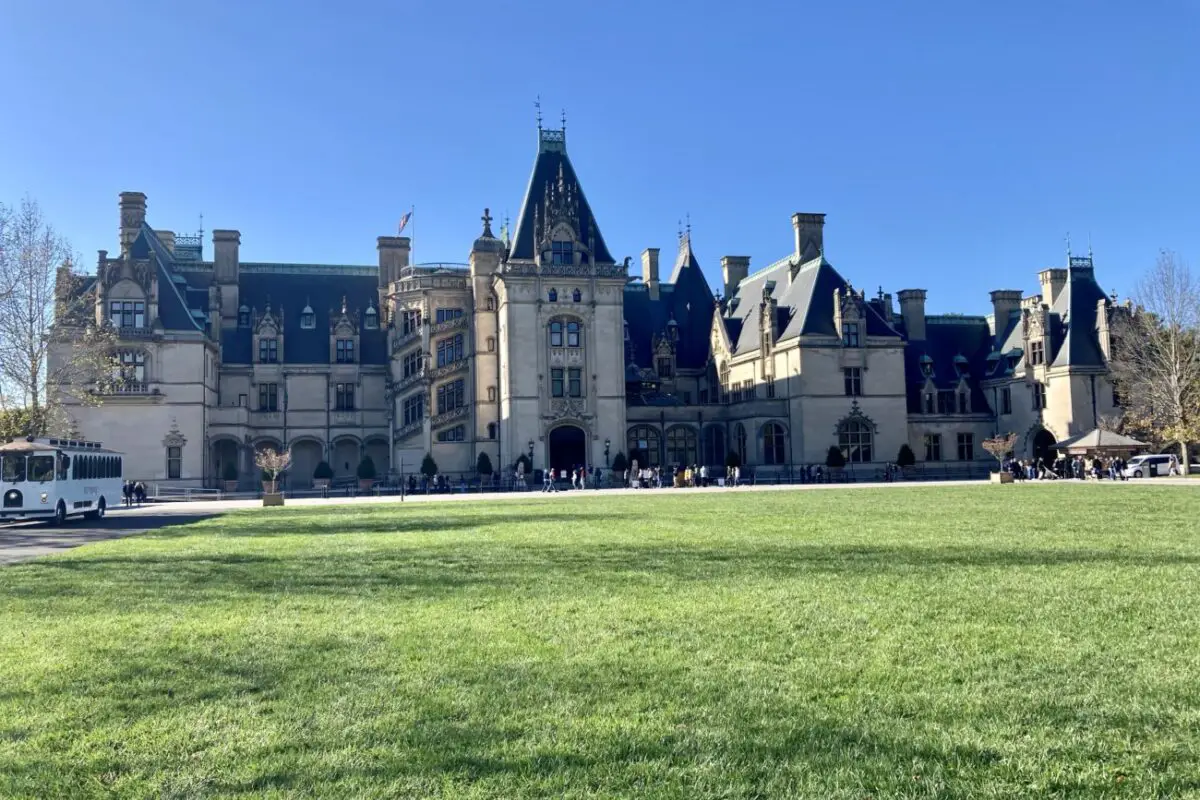The Biltmore Estate in Asheville, North Carolina. This is often among the best samples of the Victorian Era in America, the 250-room Biltmore House, America’s largest private home, and luxurious 100-year-old gardens situated on an 8,000-acre estate.
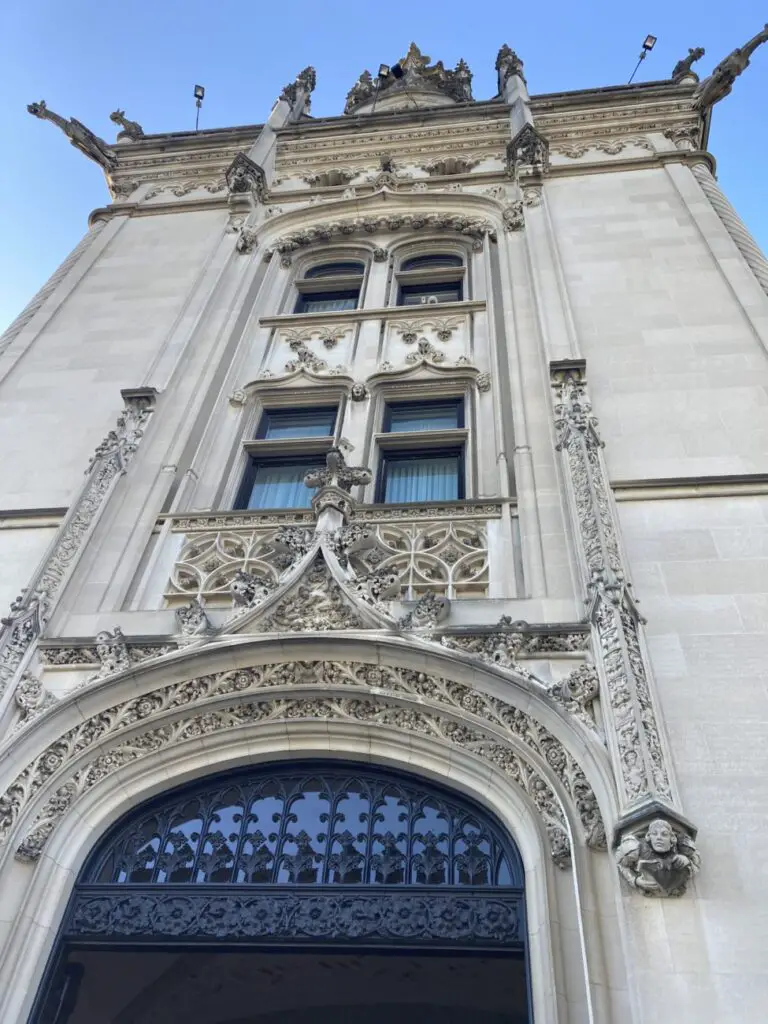
Table of Contents
What Makes the Biltmore in Asheville, NC, Special Among The World’s Large Mansions and Estates
The Biltmore in Asheville, NC, holds a special place among the world’s large mansions and estates due to its remarkable combination of grandeur, history, and natural beauty. Built by George Vanderbilt in the late 19th century, the Biltmore is an icon of the Gilded Age opulence and architectural brilliance. Spanning over 175,000 square feet, it is the largest privately owned house in the United States.
The estate showcases exceptional craftsmanship and attention to detail with its French Renaissance château-style architecture, intricate woodwork, and stunning gardens designed by Frederick Law Olmsted. Moreover, Biltmore’s location in the heart of the Blue Ridge Mountains adds to its allure, providing breathtaking vistas and a tranquil atmosphere that sets it apart from other lavish residences worldwide. The Biltmore continues to captivate visitors with its timeless elegance, rich history, and the awe it instills in all who step foot on its grounds.
#1 – George Vanderbilt started acquiring land for Biltmore in 1888 in the Blue Ridge Mountains in North Carolina.
In 1888, George Vanderbilt embarked on an ambitious endeavor that would forever shape the landscape of the Blue Ridge Mountains in North Carolina. With a grand vision, Vanderbilt began acquiring vast stretches of land for what would become the iconic Biltmore Estate. This sprawling estate would become a symbol of opulence and grandeur, nestled amidst the picturesque beauty of the mountains. Vanderbilt’s foresight and appreciation for the area’s natural beauty led him to carefully select the perfect location for his estate, ensuring that it would become a beacon of architectural and natural splendor for generations to come.
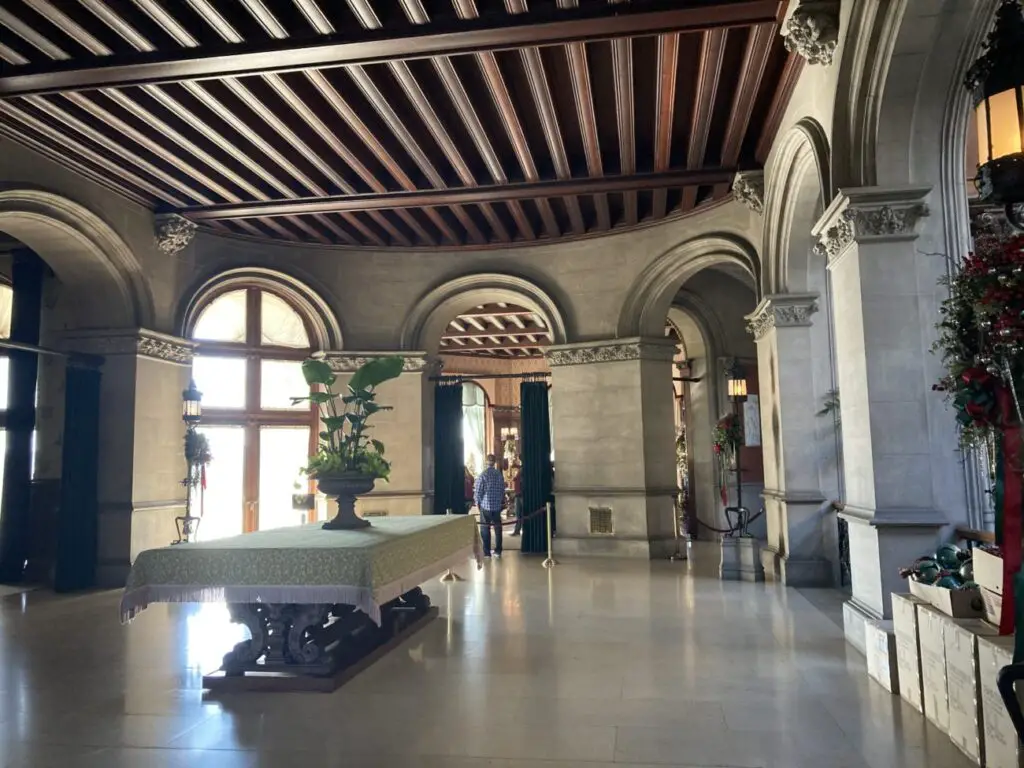
#2 – The following year’s construction begins on the Biltmore;a 250-room French Renaissance chateau, and It takes six years and thousands of skilled artisans to complete America’s most extensive domestic architecture plan.
In the subsequent year, the ambitious construction of the Biltmore commences, marking the beginning of a monumental project. This French Renaissance chateau, with its grandeur and splendor, is set to become a symbol of luxury and sophistication. The scale of this architectural endeavor is genuinely remarkable, comprising 250 rooms that will house the Vanderbilt family’s illustrious legacy.
Over six years, countless skilled artisans, each master of their craft, dedicated themselves to bringing this architectural marvel to life. Their expertise and unwavering commitment ensure that every intricate detail, from the ornate decorations to the impeccable craftsmanship, exemplifies the pinnacle of excellence. As the years pass and the Biltmore nears completion, it becomes evident that this iconic structure will stand as America’s most extensive domestic architecture plan.
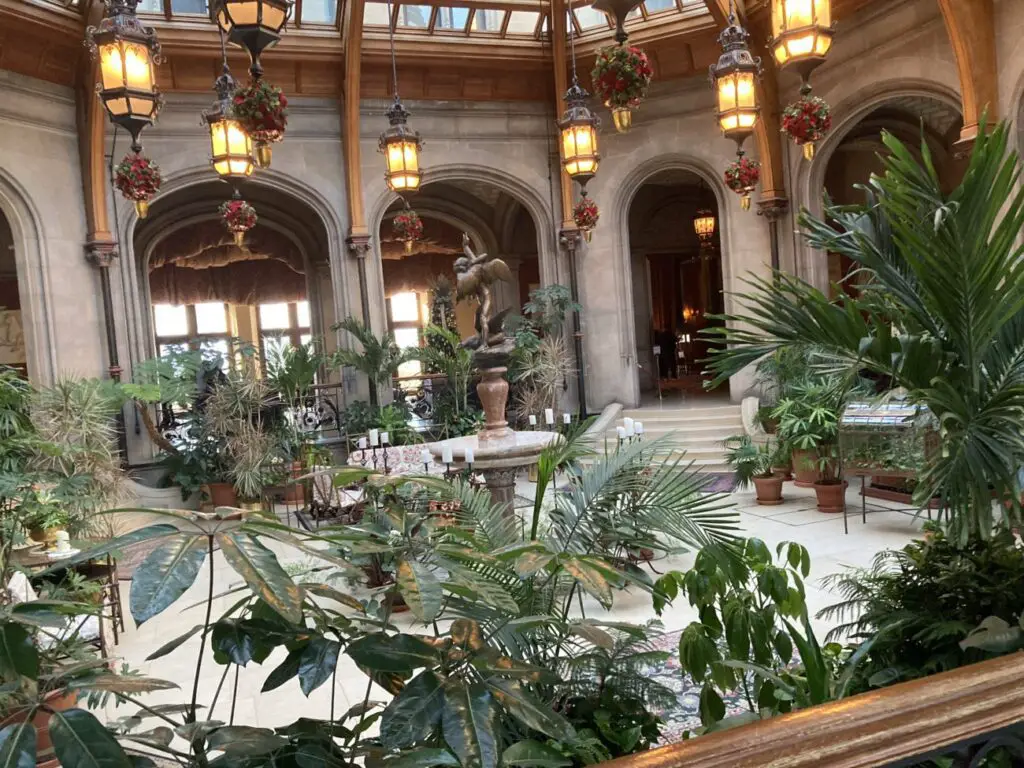
#3 – On Christmas Eve of 1895, the Biltmore Estate is officially opened. The finished home includes over four acres of floor space, 35 bedrooms, 43 bathrooms, and 65 fireplaces. It also sports three kitchens outfitted with electric elevators to support dinners, balls, and parties.
On Christmas Eve of 1895, an architectural marvel was unveiled as the Biltmore Estate opened its doors. This magnificent home, spanning over four acres of floor space, was a testament to the grandeur and opulence of the Gilded Age. With 35 bedrooms, 43 bathrooms, and an astonishing 65 fireplaces, the Biltmore Estate was a true masterpiece. It was a residence and a venue for extravagant gatherings and celebrations. The estate boasted three kitchens, each equipped with electric elevators, ensuring seamless support for the lavish dinners, balls, and parties within its walls. The Biltmore Estate remains a symbol of elegance and luxury, captivating visitors with its remarkable architecture and rich history.
Fun fact about all these bathrooms. Every single one has a toilet, bathtub, and shower. None have a faucet and sink. Sinks were placed in bedrooms replacing the typical water pitcher and basin common in the day.
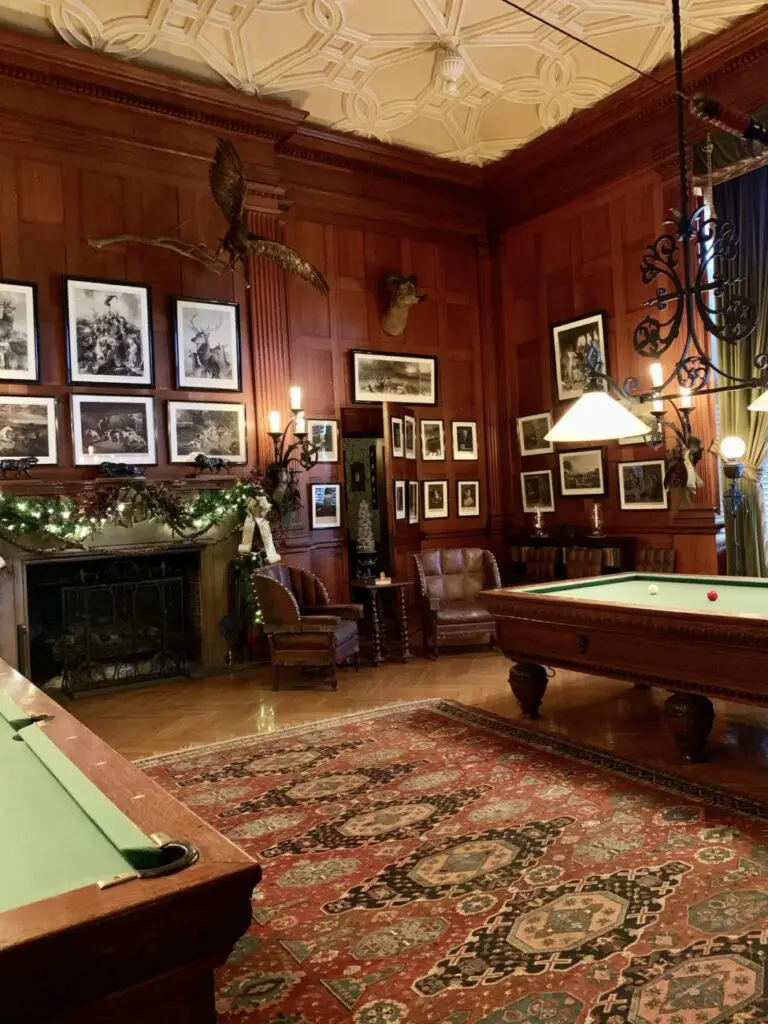
This was a period when homes still used candles, gas, or kerosene lamps as a source of light. Amazingly the Biltmore had one of the first indoor swimming pools in the country, and it was lighted! Even when many didn’t even have electricity in their home.
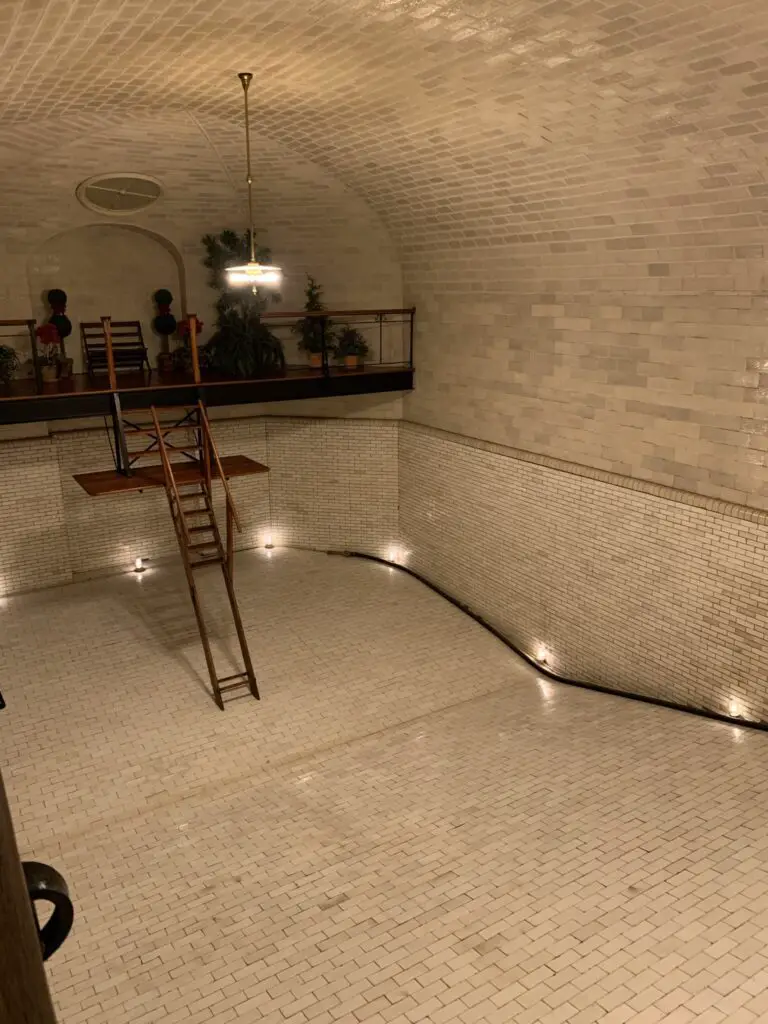
Speaking of electricity, the Biltmore was wired with both AC and DC electric delivery. This was because the battle between Edison’s direct current and Westinghouse’s use of Telsa’s alternating current was yet to be decided.
#4 – George Vanderbilt married Edith Stuyvesant Dresser three years later in Paris, France. In 1900 they welcomed the couple’s only child, Cornelia Vanderbilt, born on a summer evening of August 22 in the Louis XV Room.
After their marriage in Paris, France, George Vanderbilt and Edith Stuyvesant Dresser were blessed with the arrival of their only child, Cornelia Vanderbilt, in the year 1900. The birth took place in the exquisite Louis XV Room, on a warm summer evening of August 22. This special event marked the continuation of the Vanderbilt legacy, as Cornelia would grow up to be an influential figure herself. The setting of her birth in the opulent surroundings of the Louis XV Room further emphasized the grandeur and prominence of the Vanderbilt family.
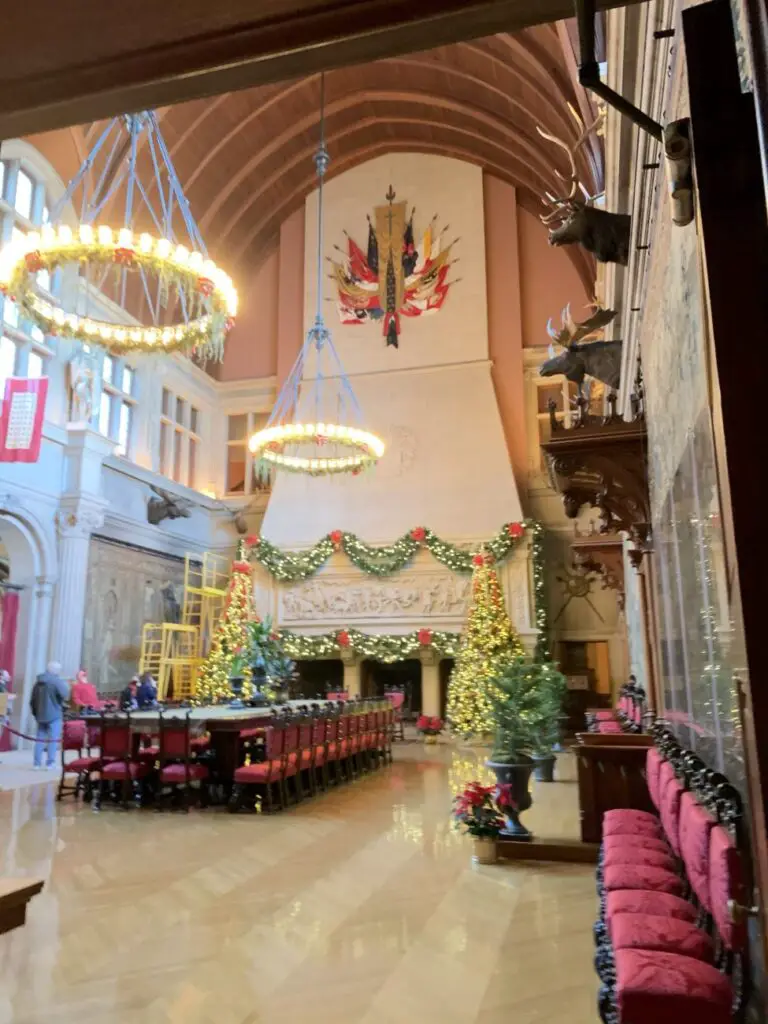
#5 – Frederick Law Olmsted designed the lavish 8,000-acre gardens and forest areas of Biltmore Estate. He was the same person who designed Central Park in New York City. It was one of Olmstead’s last projects. Vanderbilt held Frederick in such high regard he commissioned a painting of the architect in the home.
Frederick Law Olmsted, renowned for his exceptional landscape designs, left a lasting mark on the Biltmore Estate by creating the opulent 8,000-acre gardens and forest areas. It is fascinating that Olmsted, the mastermind behind the iconic Central Park in New York City, lent his artistic touch to this project, making it even more remarkable. Serving as one of Olmsted’s final endeavors, the Biltmore Estate holds a special place in his portfolio.
Such was the admiration of George Vanderbilt, the estate’s owner, for Olmsted’s genius that he even commissioned a painting of the architect to be displayed within the grandeur of the home. This testament to Olmsted’s brilliance and the significance of his work further accentuates the splendor of the Biltmore Estate.
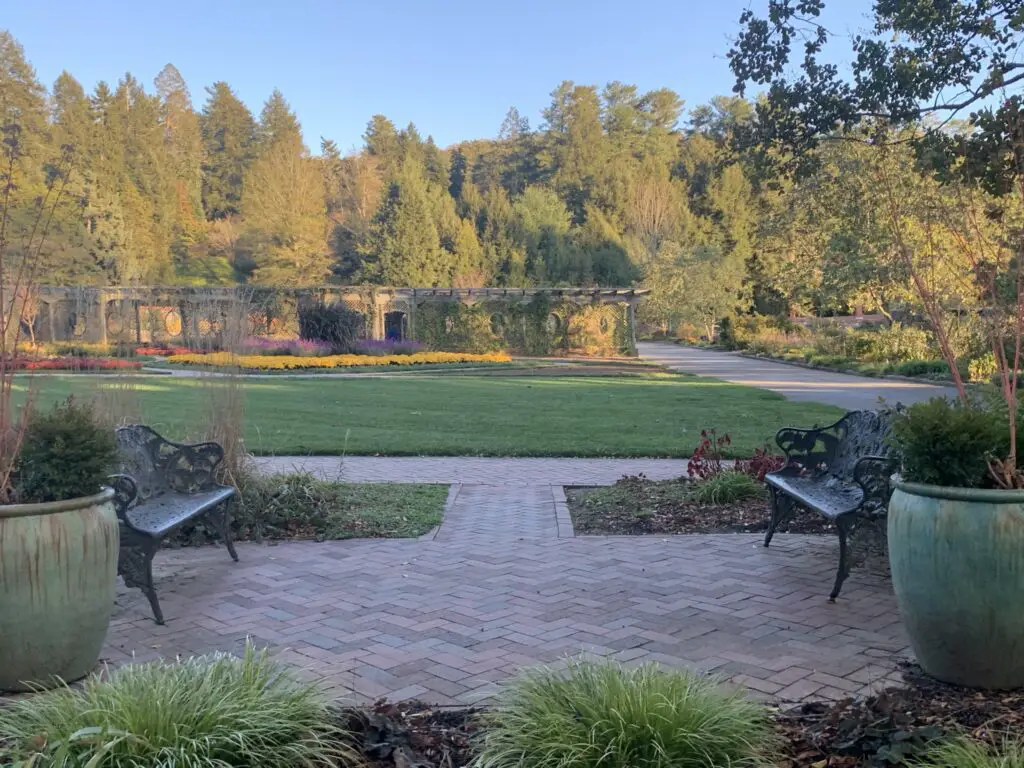
#6 – The Vanderbilt Library collection includes 23,000 books. George was an enthusiastic reader. His notations, edits, and other sketches can be seen in most of the collection books.
The Vanderbilt Library collection is an impressive compilation of 23,000 books representing various subjects and genres. However, George’s vibrant presence within its pages truly sets this collection apart. George, an avid and enthusiastic reader, left his mark on the collection through his notations, edits, and other sketches in numerous books. His passion for reading is evident as one delves into the collection, discovering George’s thoughtful annotations, insightful edits, and creative sketches that bring the texts to life. His unique perspective and engagement with the material make the collection a treasure trove for scholars as they gain a deeper understanding of the books and their impact on George’s intellectual journey.
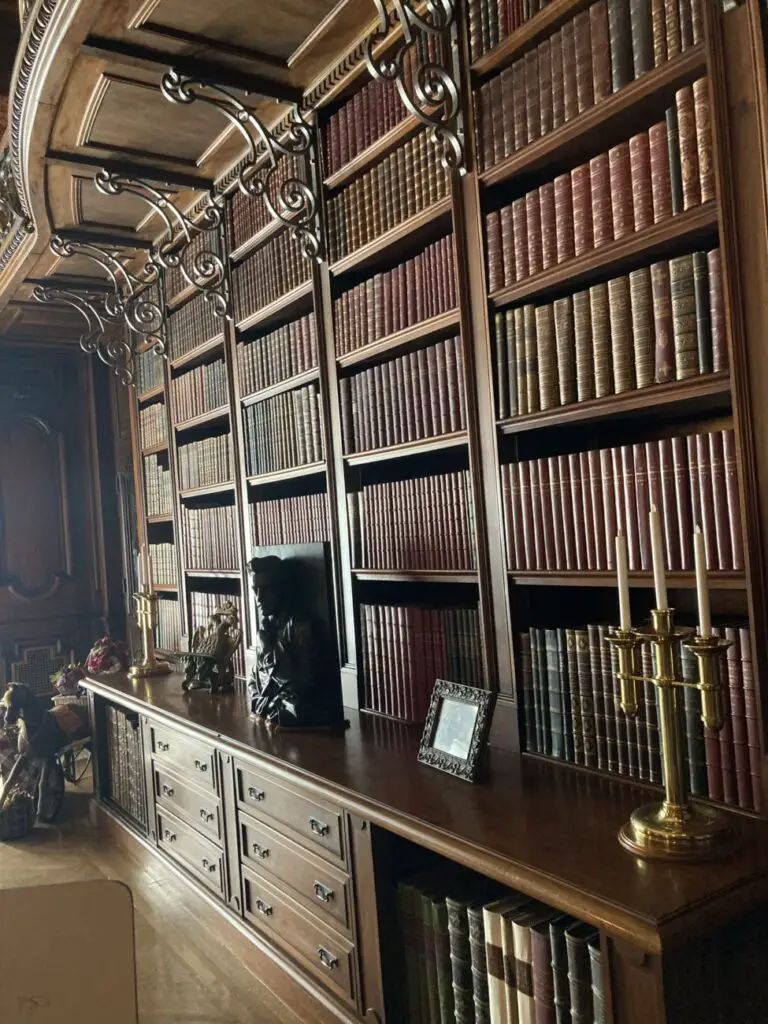
#7 – In 1914, after undergoing appendectomy surgery, George Vanderbilt passed away at 51 due to post-op complications.
In 1914, tragedy struck with the untimely passing of George Vanderbilt at the age of 51. Having recently undergone appendectomy surgery, his life took a devastating turn when he succumbed to post-operative complications. Vanderbilt, a prominent figure in American society as a businessman and philanthropist, had achieved great success throughout his life. However, his unexpected demise highlighted the dangers and uncertainties that can sometimes accompany medical procedures. His passing left a void in both the Vanderbilt family and the wider community, reminding us of the fragility of life and the importance of cherishing each moment.
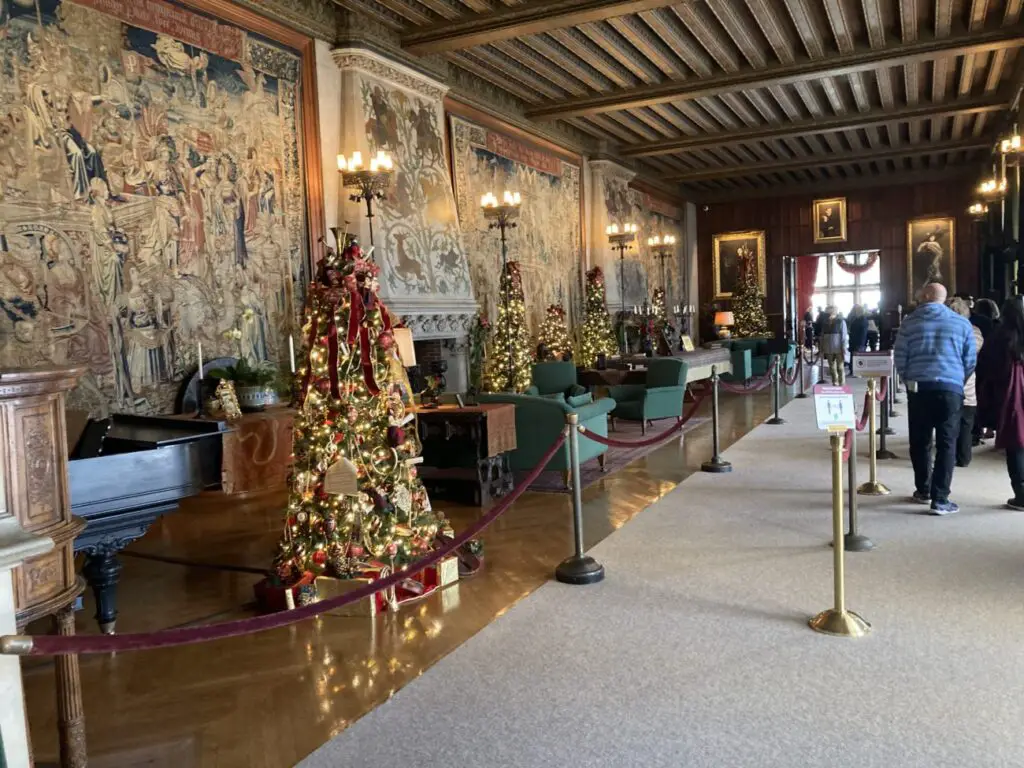
#8 – One of the first financial actions taken after George’s death, Edith sold 86,700 acres to the U.S. Forest Service in agreement with her husband’s desires. This vast acreage is part of the Pisgah National Forest.
Following the untimely demise of George, Edith wasted no time in fulfilling her late husband’s wishes by initiating a significant financial decision. She made the bold move of selling a staggering 86,700 acres of land to the U.S. Forest Service. This vast expanse of land now forms an integral part of the renowned Pisgah National Forest. Edith’s actions exemplify her unwavering dedication to honoring her husband’s legacy and ensuring his dreams and aspirations live on. By selling the land to the Forest Service, she not only secured the preservation of this pristine natural habitat but also contributed to the conservation efforts of a cherished national treasure.
#9 – A 24-year-old Cornelia Vanderbilt married the Honorable John Francis Amherst Cecil in 1924. They have two children, George Henry Vanderbilt Cecil and William Amherst Vanderbilt Cecil. Both children are born in the Louis XV Room, the same room where Cornelia was born.
In 1924, at 24, Cornelia Vanderbilt entered into matrimony with the Honorable John Francis Amherst Cecil, marking the beginning of a new chapter in her life. This union bore the couple two wonderful children, George Henry Vanderbilt Cecil and William Amherst Vanderbilt Cecil. Interestingly, both of these children were brought into the world in the Louis XV Room, the very room where Cornelia herself had been born.
This unique coincidence not only adds a touch of serendipity to their family history but also creates a special bond between the generations that have graced this grand room. It serves as a reminder to the enduring legacy of the Vanderbilt family and the symbolic significance of this space in their family’s narrative.
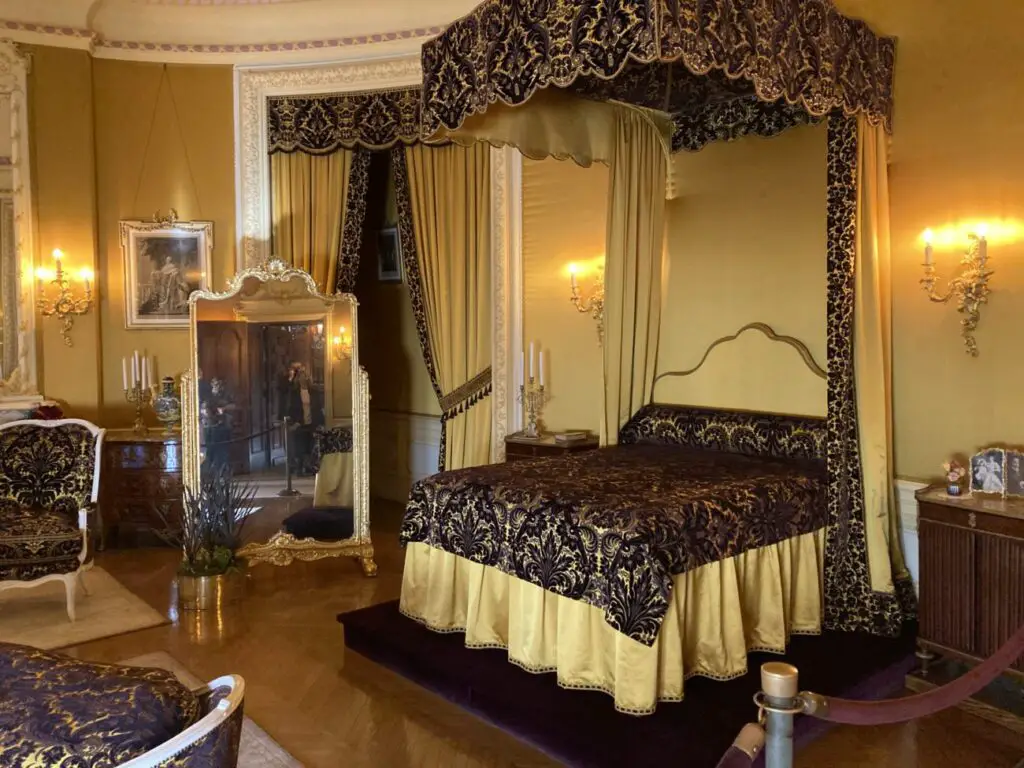
#10 – In 1930, the Biltmore House allowed the general public to assist the local Asheville economy with tourism during the Great Depression and generate income to preserve the estate.
In 1930, amidst the hardships of the Great Depression, the iconic Biltmore House made a significant decision that would benefit the local Asheville economy and ensure the preservation of its grand estate. At a time when many businesses struggled to survive, the Biltmore House opened its doors to the general public, inviting tourists from near and far to experience the luxury and beauty of its magnificent architecture and sprawling grounds.
This bold move injected much-needed revenue into the local economy, providing employment opportunities and bolstering businesses severely affected by the economic downturn. By embracing tourism, the Biltmore House not only helped the Asheville community weather the storm of the Great Depression but also secured the financial stability required to maintain the estate’s unparalleled grandeur for generations to come.
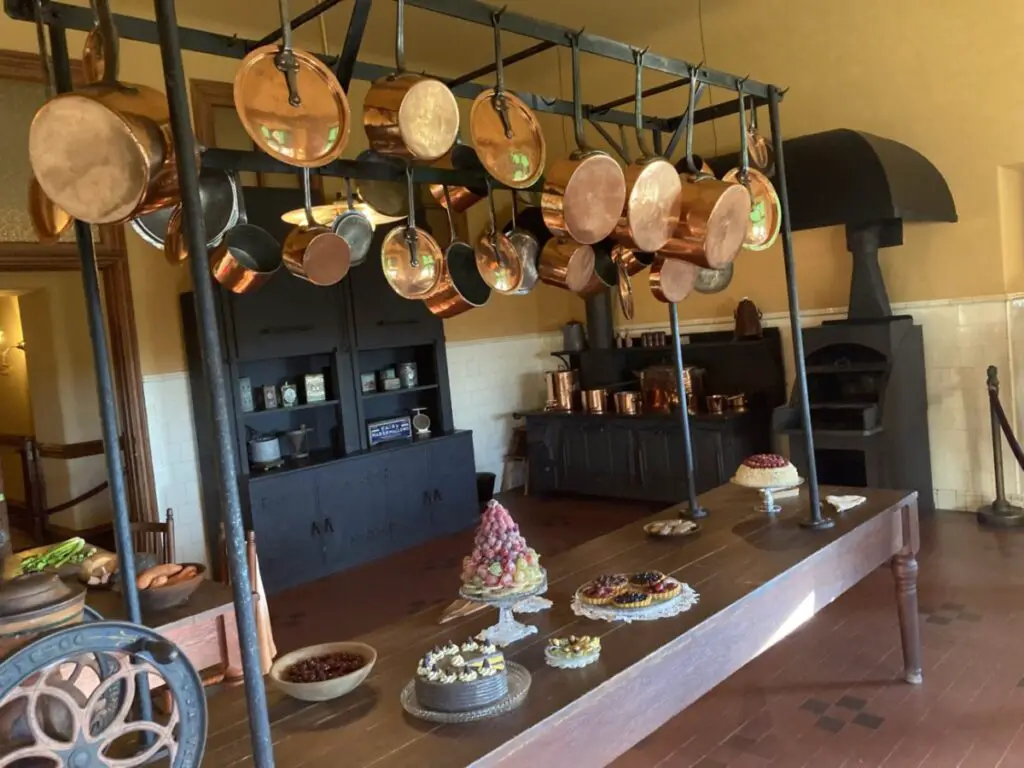
#11 – In 1942, the Biltmore House was pressed into secret service during World War II. Biltmore stores priceless works from the National Gallery of Art in Washington, DC. 62 paintings and 17 sculptures were delivered to Biltmore by train in a January 1942 snowstorm. The works included works by Anthony van Dyck, Rembrandt, Raphael, and Gilbert Stuart’s George Washington portrait. They stayed secured at the estate until 1944.
During World War II, the Biltmore House, a grand mansion located in North Carolina, played a unique and crucial role in protecting priceless works of art. In 1942, as a result of the ongoing conflict, the Biltmore was chosen to store a collection of artworks from the National Gallery of Art in Washington, DC. Despite the challenging weather conditions of a snowstorm in January 1942, 62 paintings and 17 sculptures were transported to the Biltmore House by train.
Among the notable works were masterpieces by renowned artists such as Anthony van Dyck, Rembrandt, Raphael, and Gilbert Stuart’s iconic portrait of George Washington. These invaluable pieces remained securely housed within the estate until 1944, safeguarded from potential damage or destruction during the war.
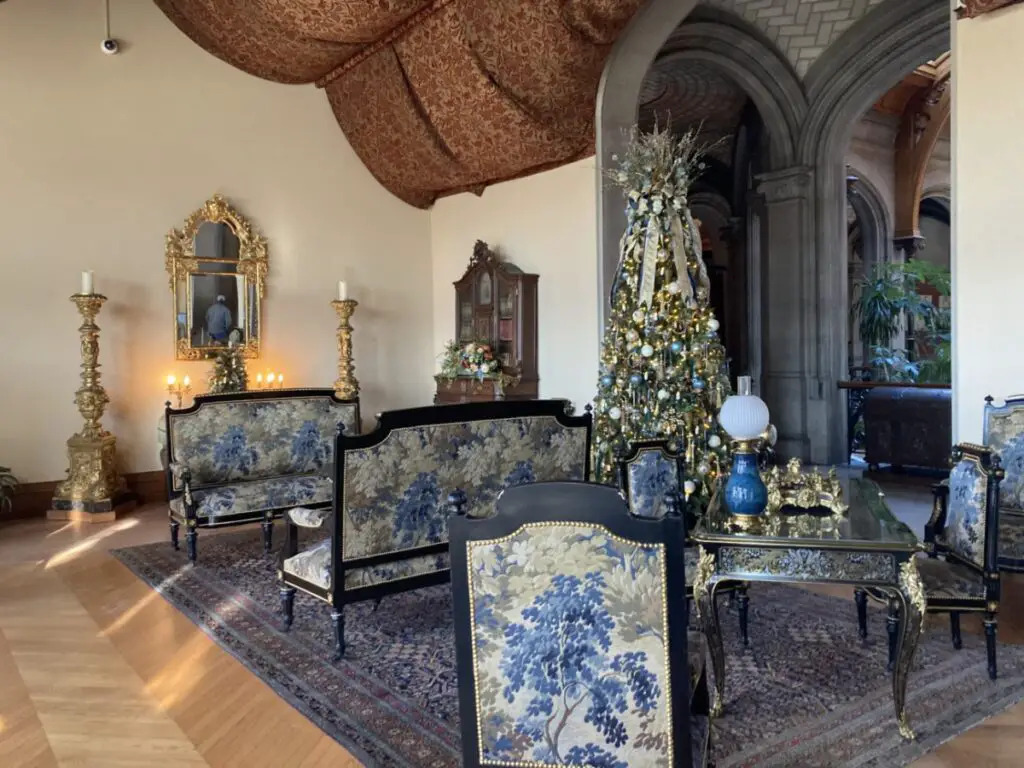
#12 – The Biltmore’s basement and some areas of the house contain hidden doors, passageways, and rooms.
The Biltmore Estate, renowned for its grandeur and opulence, holds a secret within its walls that adds an air of mystery and intrigue. Concealed beneath the magnificent mansion and scattered throughout its various rooms are hidden doors, passageways, and rooms waiting to be discovered by those who venture deep into its depths. The Biltmore’s basement, in particular, serves as a gateway to this hidden realm, where one can uncover a labyrinth of secret corridors and hidden chambers. These concealed spaces, shrouded in darkness and secrecy, add an element of wonder and fascination to an already extraordinary architectural masterpiece, enticing visitors to uncover the secrets within the depths of the Biltmore Estate.
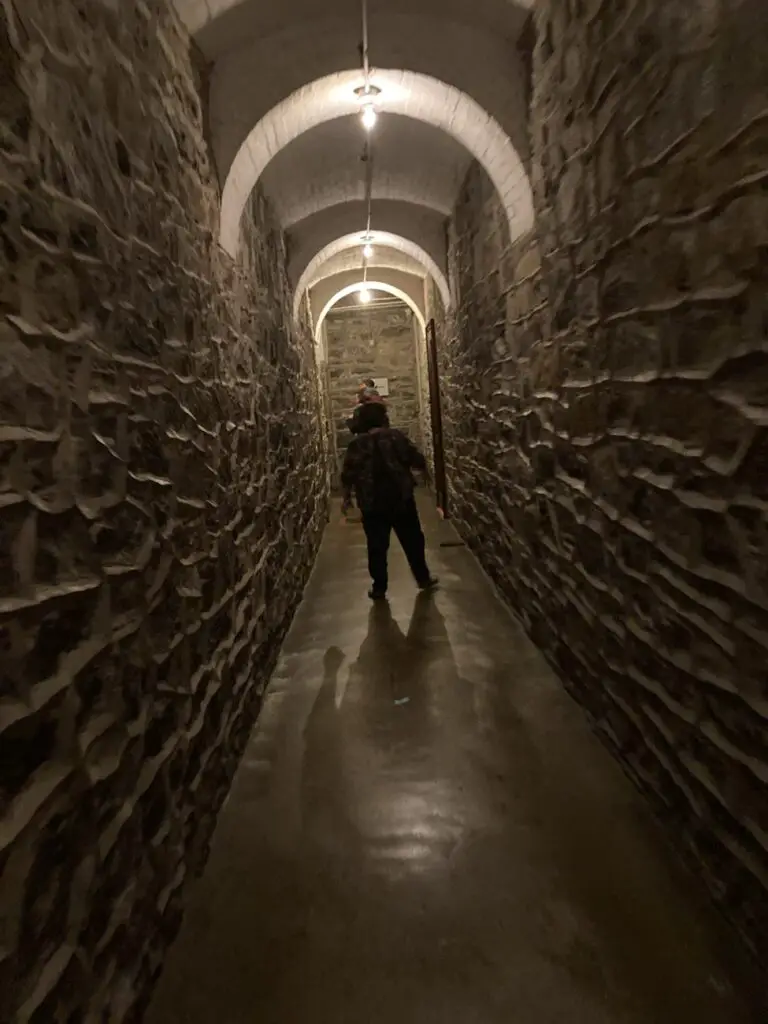
#13 – The Biltmore has the first private bowling alley. All were built by a new company called Brunswick.
The Biltmore, a luxurious and iconic hotel, proudly boasts the title of being the first establishment to feature a private bowling alley. This remarkable addition to the hotel’s amenities was made possible through the collaboration with a pioneering company named Brunswick. Known for their expertise in crafting top-notch bowling equipment, Brunswick created a state-of-the-art bowling alley specifically for the Biltmore. This innovative creation revolutionized the concept of leisure and entertainment within the hotel industry, providing guests with an exclusive and extravagant experience. The Biltmore’s private bowling alley not only showcases the hotel’s commitment to offering unparalleled luxury, but also highlights the visionary partnership with Brunswick, setting a new standard for leisure activities in prestigious establishments.
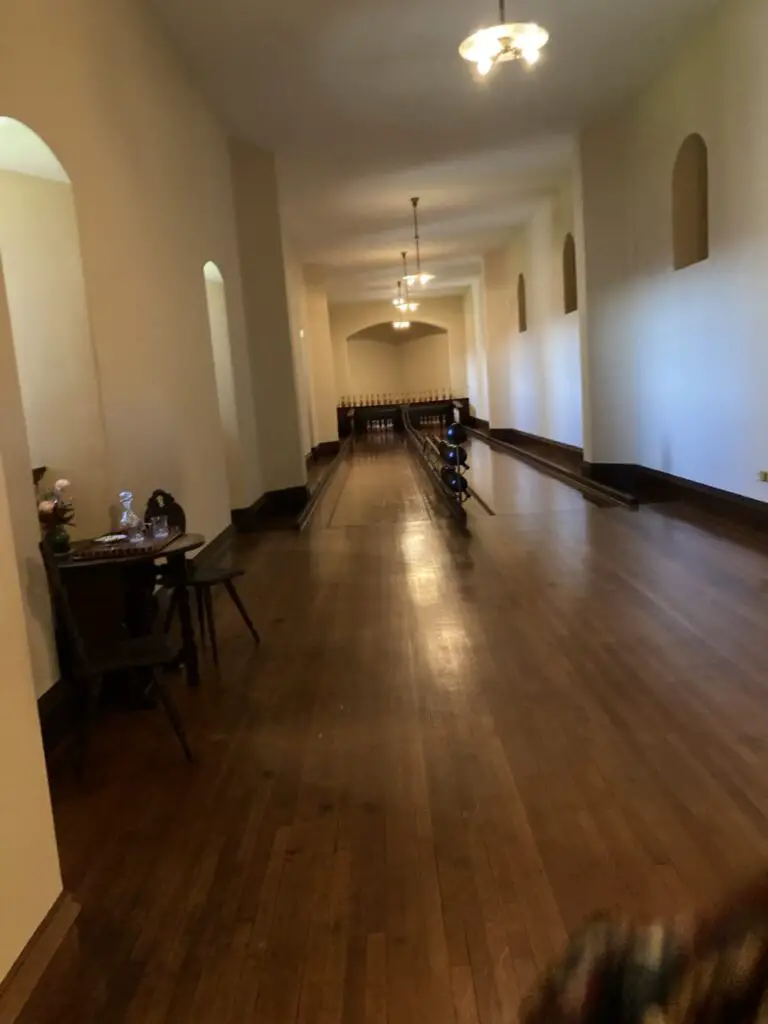
#14 – By 1971 William Cecil plants his first grapevines at Biltmore. This led to the establishment of a winery at the estate that continues to the present day. In 2017 the Biltmore estate employed over 2,400.
In 1971, William Cecil made a significant decision that would shape the future of Biltmore estate. He planted his first grapevines, marking the beginning of a new chapter in the estate’s history. This bold move eventually led to the establishment of a winery, and it continues to thrive to this day. Over the years, the Biltmore Estate has become renowned for its exquisite wines, attracting visitors from all over the world. As a result, the estate has experienced remarkable growth, becoming a major employer in the region. In 2017, the Biltmore estate provided employment opportunities to over 2,400 individuals, contributing to the local economy and further solidifying its position as a prominent destination.
#15 – The Biltmore is America’s Grand Estate. The house and grounds and designated a National Historic Landmark in 1963. It’s one of the most significant tourist attractions in North Carolina, with 1.4 million visitors each year.
The Biltmore is undeniably America’s Grand Estate, captivating visitors from all over the world with its majestic house and sprawling grounds. Recognized for its historical importance, the Biltmore was designated a National Historic Landmark in 1963. Located in North Carolina, it stands as one of the state’s most prominent tourist attractions, drawing an astounding 1.4 million visitors each year. The sheer grandeur of the estate, with its magnificent architecture and stunning landscapes, leaves visitors in awe of its beauty and rich history. From exploring the opulent interiors of the house to strolling through the meticulously manicured gardens, a visit to the Biltmore is a truly unforgettable experience.
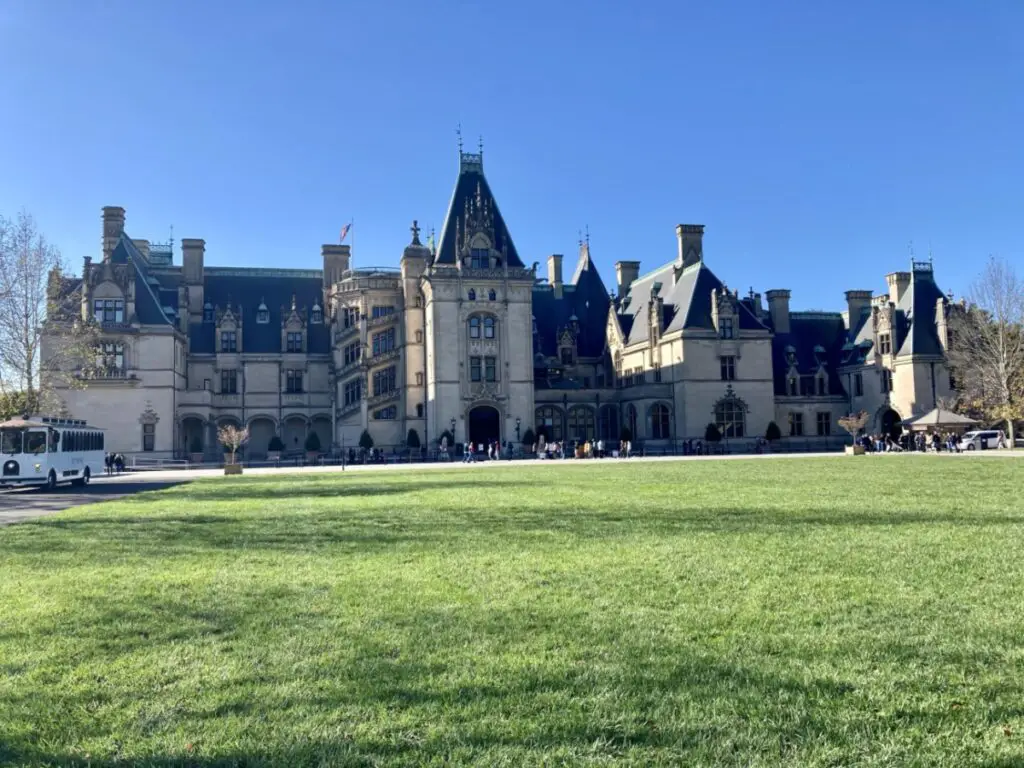
Webcam At the Biltmore Estate

Click on image to refresh
Final Thoughts on the Biltmore Estate
The Biltmore Estate is one of the most famous attractions in America, and it’s easy to see why. The house, grounds, and gardens are all stunning, but there are some secrets that even the most seasoned visitors might not know. We’ve put together a list of five things you probably didn’t know about the Biltmore Estate so that next time you go on a tour or explore on your own – it will be even more exciting!
We first wanted to tell everyone how lucky they are because they get to visit such an incredible place! If you haven’t been there yet, take our word for it: no matter what season you visit, something beautiful will happen at this historic estate. Whether it’s springtime with all those lovely flowers blooming or summer when everything looks perfect for picnics in front of the manor house – any time of year is an excellent reason to go see one of America’s oldest properties up close.

